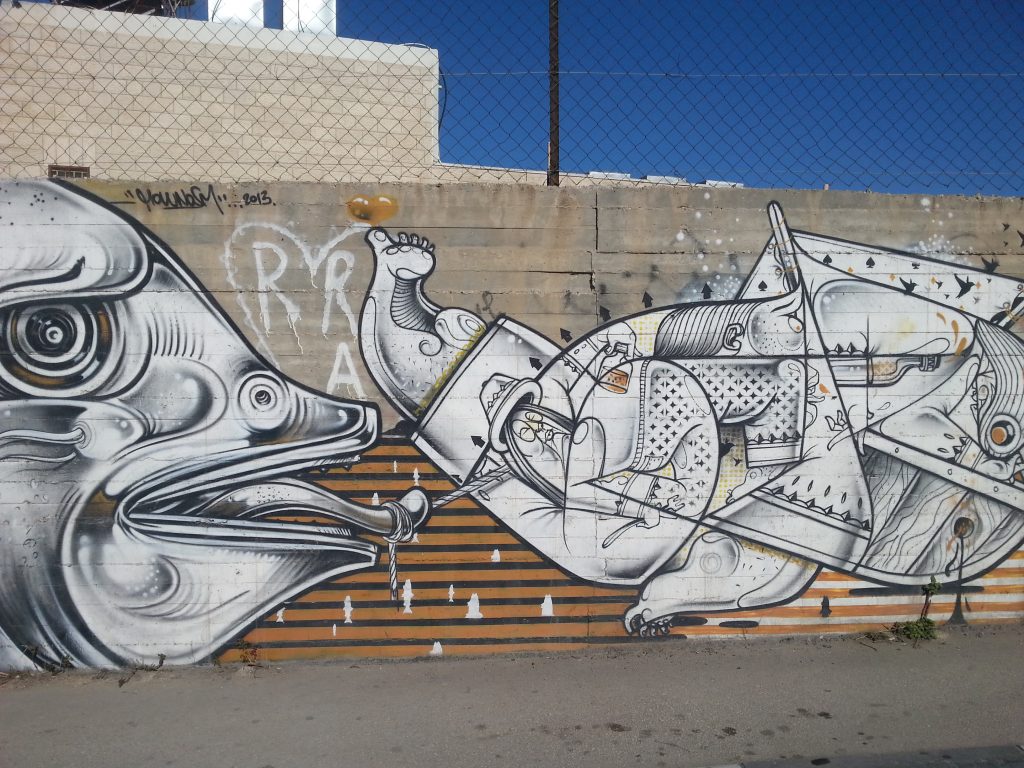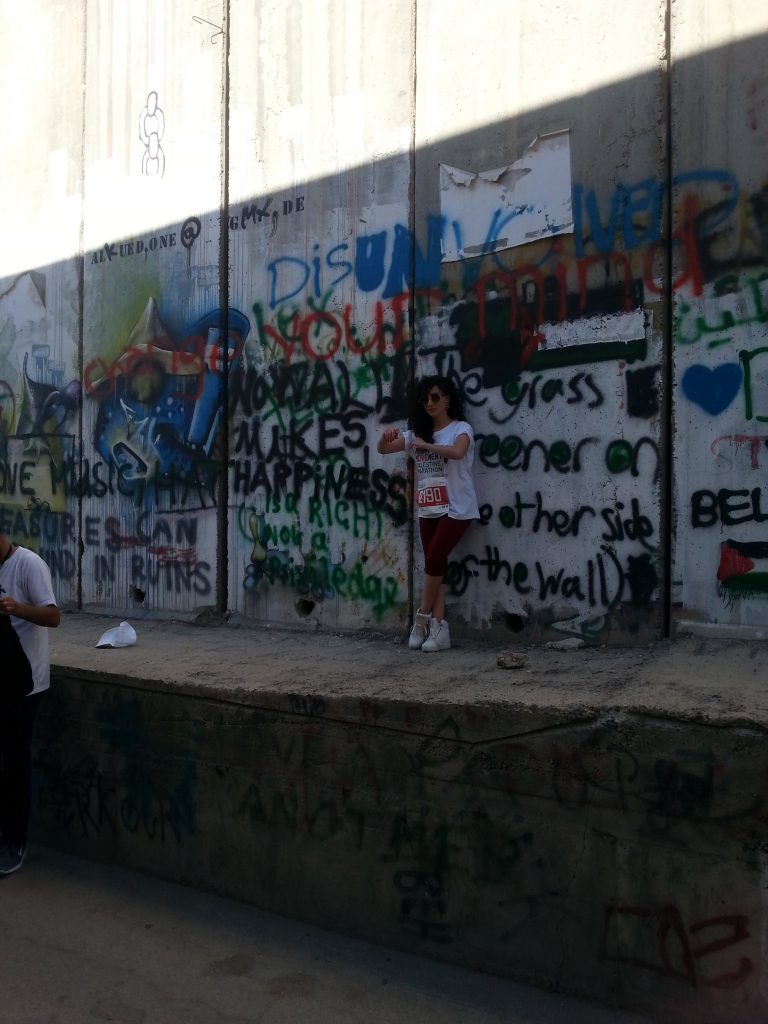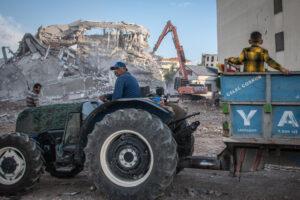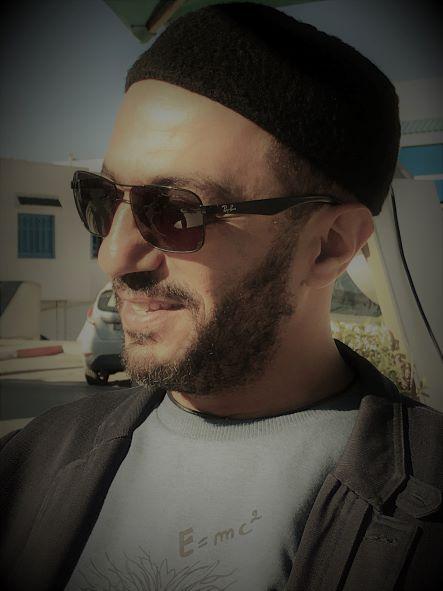Podcast: Concrete canvas on the West Bank wall
By Khaled Diab
Like the Berlin Wall and other political barriers, the Israeli wall has witnessed an explosion of protest art on its concrete canvas.

Tuesday 6 September 2016
From where I live on the Mount of Olives, I have a sublime view over the Jordan Valley, all the way to the Dead Sea and beyond. But the divine landscape conceals an unholy reality.
The territory I can survey with my naked eyes is sliced and diced into numerous zones, including the Israeli-annexed Jerusalem municipality, settlements, West Bank Palestinian towns and villages, and more.
If you look carefully, this geopolitical reality is underscored by the Israeli wall, which goes by various names, depending on who is speaking: the separation or security fence or wall, by the Israelis, or the apartheid or segregation wall, by the Palestinians.
The wall runs across the landscape like an open gash or a badly healed scar. Even though Israel insists its sole purpose is to ensure the safety and security of its citizens, the concrete monstrosity swallows up land, disrupts lives, ruins livelihoods, segregates Israelis and Palestinians, and reinforces the psychological and emotional barriers between the two peoples.
Like the Berlin Wall and other political barriers elsewhere, the Israeli wall has witnessed an explosion in artistic expression since its construction. And this artwork has become the target of political pilgrims.

During the recent Palestine marathon, I stopped, like many others, to take snaps of the more striking artworks on the wall. Surreally, a surprisingly high number of Palestinians were posing for individual or group selfies, making the barrier seem more like a tourist attraction than a prison wall.
The most famous artist to have worked on this concrete canvas has to be British graffiti artist Banksy. With his trademark mix of humour and poignant socio-political commentary, Banksy figuratively tears through the barrier.
One of his large murals features a huge, misshapen crack in the wall through which a child climbs. This puts me in mind of the street murals painted on to the walls erected by the Egyptian military in Cairo to curb the movements of revolutionaries. To reclaim the streets, revolutionary artists simply and painstakingly painted what was on the other side, transforming the concrete barriers into a transparent window.
One amusing Banksy art piece features a large, rectangular dotted line with scissors on its edge, rather like what you find around a cut-out coupon in a newspaper. Another expresses more explicitly the desire to escape. In it, a rope ladder dangles precariously off the wall with a boy at the bottom tugging on it.
Armed with sledgehammers, some activists have emulated this desire to smash through the barrier in real life. Others have actually scaled the wall in daring stunts aiming to show that no barrier can hold back the human determination to be free.
But it is not just political activists. Thousands of ordinary Palestinians find creative ways to get over, under or around the wall and fences which cage them in, so as to make a living or see family and friends.
Khaled Jarrar, the hard-hitting and provocative Jenin-born Palestinian artist who lives in Ramallah, made a hauntingly raw, unstructured documentary, called Infiltrators, about this. Over the course of four years, Jarrar filmed workers, patients, worshippers and smugglers as they embarked on risky journeys to the other side. Despite the overall grimness, there are moments of surreal comedy, such as the Palestinian boy squeezing bread through a hole in the wall, apparently oblivious to the world around him.
For wry humour and true laughs at the absurdity of it all, one must turn to Suad Amiry's book Nothing to lose but your life. In it, the intrepid architect, academic and author disguises herself as a man and joins a group of workers in the dead of night as they attempt to cross into Israel.
With her eye for the ironic and quirky, and her no-holds barred straight-talking, Amiry brings to vivid life the rogues parade of characters she encounters on her journey. And it is all done with the eccentric, zany, chatty wit she exhibits in person, as well as on the page.
But the wall separating Israelis and Palestinians is not just a canvas and subject for art, it can also provide its raw materials. Khaled Jarrar chips away chunks of the wall and uses the concrete to fashion or sculpt footballs, basketballs and ping-pong rackets, like those abandoned by kids playing by the wall.
Palestinians may dream of dismantling the wall and ending the restrictions it imposes on their lives, but, in the meantime, life goes on. Under its long concrete shadow, in front of its dizzying array of street art, people go about their days until the day arrives when it, like its predecessors elsewhere, will vanish.


